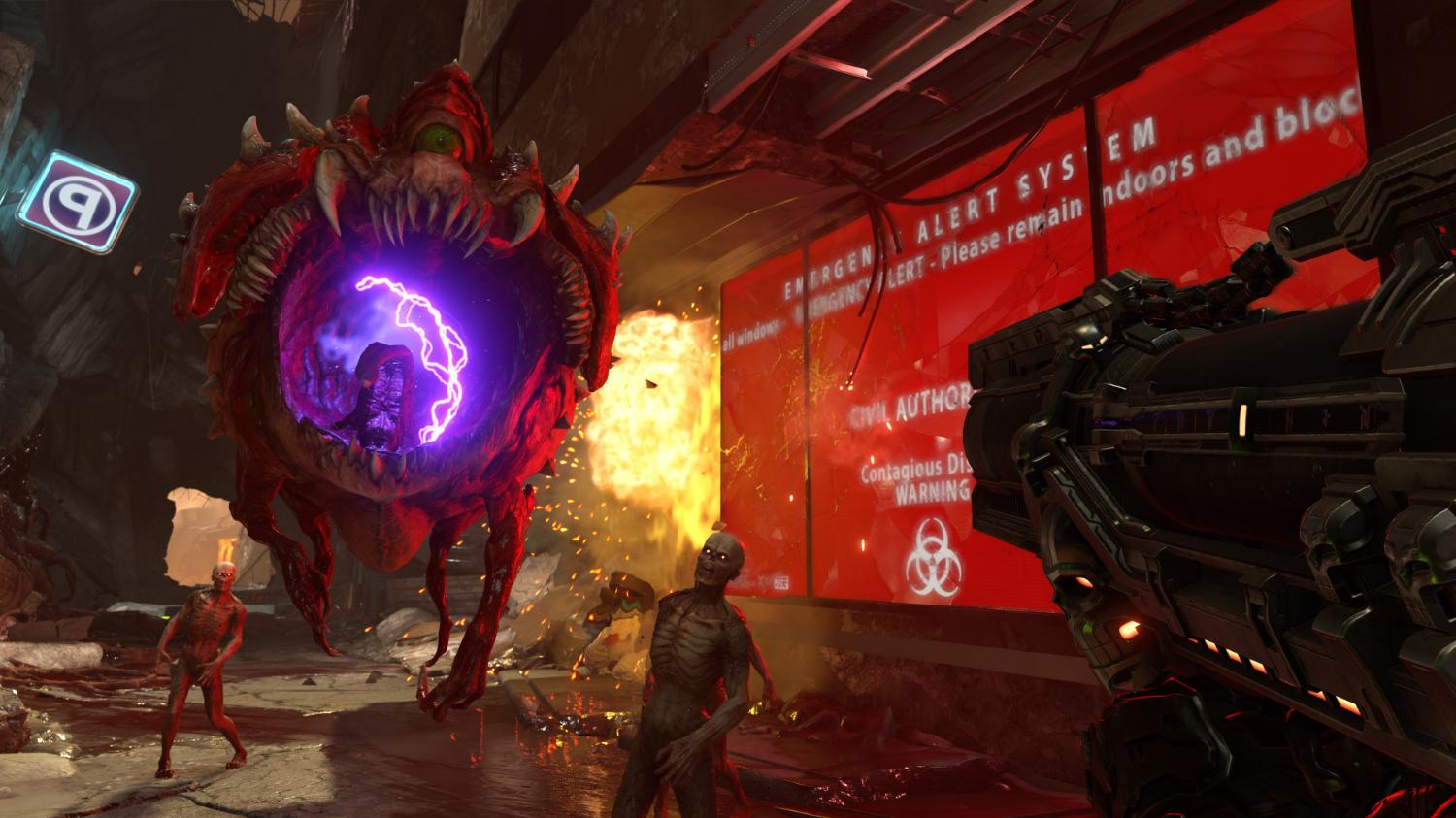LOS ANGELES – Pairing up Doom Eternal with Google Stadia is, technically, a match made in Hell — but at least it’s a fun version of Hell.
During a meaty demo of Bethesda’s new first-person shooter, I went headfirst into the depths of a demon-infested Mars, tearing hellspawn apart with pulse rifles, combat shotguns, rocket launchers, chainsaws, flamethrowers and — when all else failed — my bare hands. It’s a supremely satisfying romp, and coincidentally, it’s also an excellent way to test out how Google's Stadia platform performs under pressure. After all, one false move in Doom Eternal will send you to the underworld right alongside your foes.

I had a chance to go hands-on with Doom Eternal and Google Stadia at an E3 2019 press event, and I was mostly impressed with the experience. However, the Wi-Fi connection at the event wasn’t perfect, which gave me a glimpse of how Stadia deals with disconnections, and this turned out to be, arguably, even more instructive than playing the game under ideal circumstances. Stadia has a novel way of addressing unstable connections, and it’s fairly forgiving.
Doom Eternal: How it plays
First and foremost, though, let’s talk about Doom Eternal, which is the gaming equivalent of a shot of pure adrenaline. In the demo I played, the Doom Slayer had no time for niceties like long story cutscenes, intricate puzzles or deep characterizations. He was there to tear every demon on Mars limb from limb, and every tool in his arsenal was there to help him further that goal.
By the end of the demo, I had a combat shotgun, a close-range shotgun, a plasma rifle, a rocket launcher and a variety of attachments. From honing in on enemies with precise shots, to pinning them down with electric crossbow bolts, to microwaving them from the inside out, the attachments added a little variety to combat, which is already chock-full of options. If you need more health, you can weaken an enemy ad perform a profoundly satisfying, gory “glory kill.” If you need more ammo, you can rip an enemy in half with a chainsaw. If you need more shields, you can set an enemy ablaze with a flamethrower.
Doom Eternal requires you to employ a variety of techniques to succeed. Since you’ll always need to keep moving to dodge the enemies’ constant barrages, every encounter is a kind of managed chaos, where you’ll always be nearly out of some resource that you need, but also have all the tools at your disposal to get more of it. It’s the same basic gameplay loop that worked so well for Doom (2016), just with even more options in your weapon wheel.
How Stadia performed
For the most part, Doom Eternal ran beautifully on Stadia, capping out at 1080p with a 60 fps frame rate. (When Stadia launches, it will support 4K resolutions as well, provided that your broadband setup can pull at least 35 Mbps.) When the game first loaded up, I had a few seconds at what looked like 480p, then less than a minute at 720p. Once the game stabilized, my resolution didn’t drop below 1080p, and I don’t recall any kind of lag or screen tearing.
However, the Wi-Fi at the Stadia event was spotty, with the Stadia application disconnecting twice. It’s important to point out that the app didn’t crash, though. I had to wait a few minutes for the Wi-Fi to reset, but once it did, I saw a blue button that let me launch the game once again, right where I’d left off. After a few moments of the Doom Slayer spinning around helplessly while I reset the camera, I jumped right back into the action.
I spoke with a Stadia representative, who told me that when a game disconnects unexpectedly, it will hold a player’s place for a full 10 minutes before shutting down the session completely. That means that if your Internet cuts out suddenly, you won’t have to worry about lost progress; if your Internet goes down for the afternoon, you’ll have to start from the last checkpoint when you load up the game again.
This seems like a fair compromise between functionality and forgiveness, even though there will be a few hectic moments when you first reconnect. If you’re in the middle of a tough single-player scenario, you might not make it; if you got disconnected from a multiplayer match, you’ll probably already be dead. (But then again, that’s true for all multiplayer games, regardless of what platform you play on.)
Outlook
As when I first encountered Stadia a few months back at GDC, I’m currently of two minds about it. From a technical perspective, it’s extremely impressive, providing perfect gameplay performance as long as you have a relatively strong Internet connection. I’m excited about playing on any platform, from PCs to TVs to smartphones.
But I didn’t like the fact that my single-player Doom Eternal experience was at the mercy of an Internet connection. Even the most stable connection goes down occasionally, and a downloaded game will never change resolutions or disconnect on you. Now that we know that most Stadia games will cost full price, on top of a Stadia subscription, it’s not clear if the benefits will outweigh the costs.
Doom Eternal will launch on PC, PS4, Switch, Xbox One and Stadia on Nov. 22, 2019. The game itself looks like a blast; the Stadia version looks like a blast, as long as you’ve got strong, stable broadband.
Be sure to follow our E3 2019 news hub all week long for the biggest reveals and impressions out of Los Angeles.




